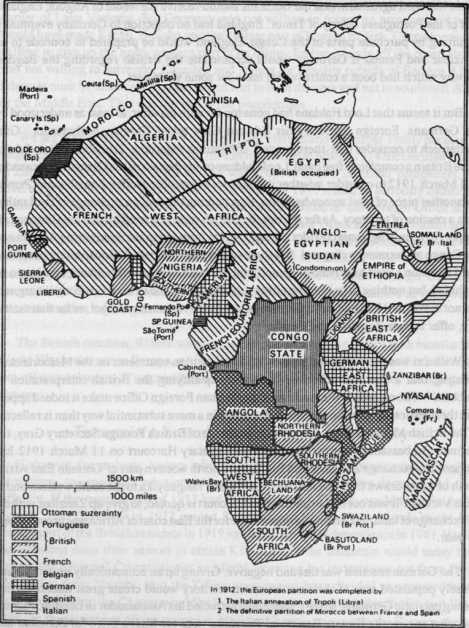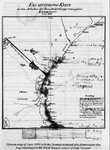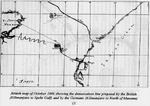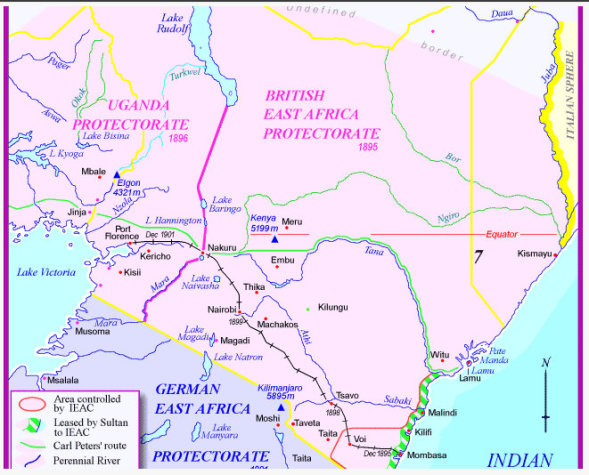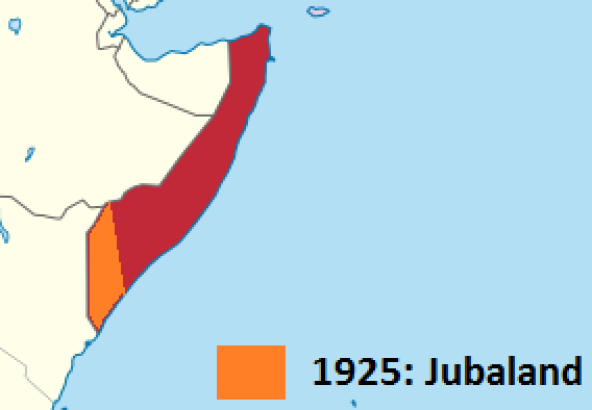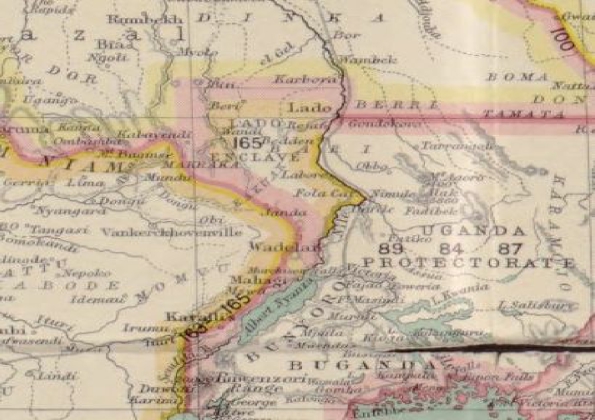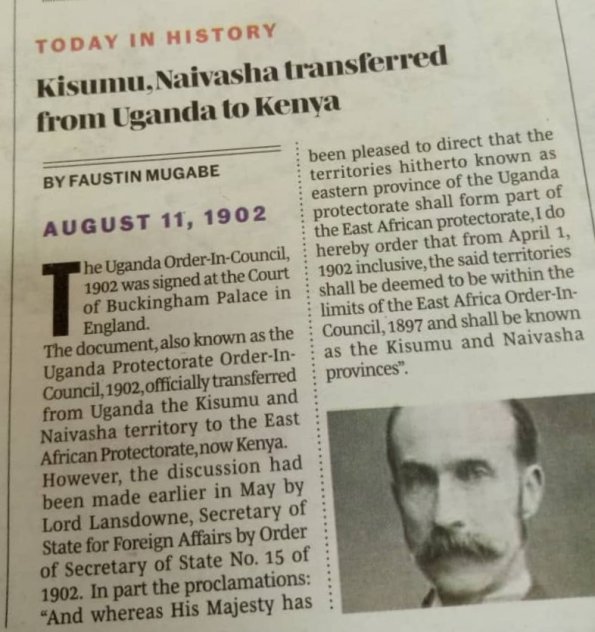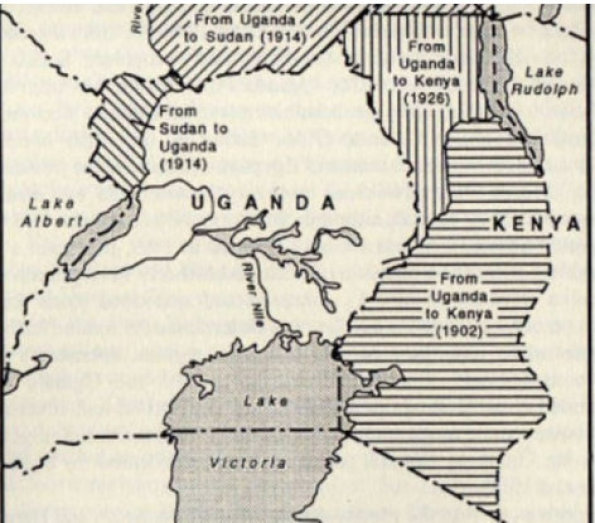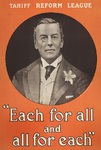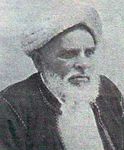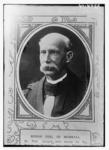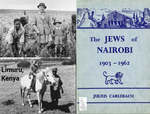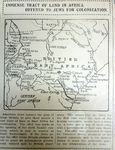Scramble for Africa
The Beginning
The presence of Indians in East Africa (Coastal known as Zeng or Zenj) is well documented in the Periplus of the Erythrean Sea or Guidebook of Red Sea by an ancient
Greek author written in 60 AD.
1593 Indian masons were employed for the construction of Fort Jesus in Mombasa.
The Berlin Conference of 1884-5, which regulated European colonization and trade in Africa, is seen as emblematic of the "scramble".
October 1885, limits of Sultan of Zanzibar’s sovereignty, and the delimination of the “spheres of influence” of Great Britain and Germany in East Africa began.
From 1880-1890 ..it was IBEAC that was in persuit of demarcations along the Victoria Nyanza.. Agreement with the German
East Africa Company was not easy until around 1893. Another meeting leading to the 'Heligoland Treaty', was held in 1890 to ensure Africa 'The benefits of peace and civilisation' and settled the last
disputes which still existed between Britain and Germany who abandoned some places in Kenya, receiving in compensation the Island of Heligoland in the North Sea.
On 3 March 1885, the German government announced that it had granted an imperial charter, which was signed by
Chancellor Otto von Bismarck on 27 February 1885. The charter was granted to Peters' company and was intended to establish a protectorate in the African Great Lakes region.
1885: German East Africa (Deutsch-Ostafrika) was colonized by the Germans in 1885. The territory itself spanned 384,180
square miles (995,000 km2) and covered the areas of modern-day Rwanda, Burundi and Tanzania.
1886 IBEAC was in persuit of demarcations along the Victoria Nyanza.. agreement with the German East Africa Company.
25th May 1887, Sultan Bargash granted to the East Africa Association a concession for a period of 50 yrs.
1888; Imperial British East Africa Company obtained , a Royal Charted from her Majesty on Sept 3rd
1888.
1888 the Imperial British East
Africa Company established claims to territory in what is now Kenya.
1889: IBEAC recruited 300 Indians from Delhi on 3 yrs contract..police the whole of the company’s
territory.
In 1890 and 1894 British protectorates were established over the sultanate of Zanzibar and the kingdom of Buganda
(Uganda).
1890: Another meeting leading to the 'Heligoland Treaty', was held in 1890 to ensure Africa 'The benefits of peace and
civilisation' and settled the last disputes which still existed between Britain and Germany who abandoned some places in Kenya, receiving in compensation the Island of Heligoland in the North
Sea.
1890 AMJ arrived in Mombasa.
1891: 24 inch gauge, Central Africa Railways of I.B.E.A to Kipevu from Mombasa was already in place by 300 Indians from Delhi,
obtained strict permission from the Foreign Office and Government of India.Indians were restricted also to take up contracts in German East Africa.
In December 1891 Captain James Macdonald began an extensive survey which lasted until November
1892….
1891:The German East Africa Company was dissolved and Imperial Administrative established.
1892 Shewing Proposed Railway was produced.
1893: British East Africa ( I.B.E.A) came to be…
1893: German East Africa was formed
1893: MacDonald’s report of 657miles from Mombasa to Port Victoria …recommended 3’6” gauge.
1895 the company’s territory in Kenya was transferred to the crown as the East Africa Protectorate (after 1920, the Kenya Colony
and the Kenya Protectorate).
1895: London committee of, chaired by Percy Anderson to supervise construction of Uganda Railways was confirmed.K.A.R was also
formed, K.A.R Nubians in Uganda were…
Jan 1896 arrival of Indian workers for the building of Uganda Railways
An emphatic 1897 expedition by …. Lieut. R. Bright, Capt. Macloughlin D.S.O,. Major Austin, R.E., .Lieut Hon .A. Hanbury Tracy,
Capt Fergusou D.S.O and Col. Macdonald.
Recruitment by Alibhai Jeevanjee , Karachi, Bombay and (Marmagoa in 1902) from Punjab and Gujurat, 7000 remained behind….1914-
Estimated 34,000 indians were recorded to be in Kenya/Uganda .
1914-1918 World War …Great Britain and Germany were at War (Kenya and Uganda/Tanganyika)
Under the Treaty of
Versailles (signed June 1919; enacted January 1920), Britain was awarded the former German territory of Tanganyika as a League of Nations mandate.
All of these territories achieved political independence in the 1960s, and Zanzibar united with Tanganyika to form Tanzania in 1964.
The Creation of East African Borders
German East Africa
The colony was organized when the German military was called upon to put down a revolt against the activities of a colonial company during the late 1880s. It ended with Imperial Germany's defeat in World War I. Afterwards, the territory was divided between Britain and Belgium and reorganized as a mandate of the League of Nations.
Like other powers, the Germans expanded their empire in the Africa Great Lakes region on the basis of fighting slavery and the slave trade. Unlike other imperial powers, however, they never actually formally abolished it, preferring instead to curtail the production of new "recruits" and regulate the extant slaving business.[1]
The colony began with Carl Peters, an adventurer who founded the Society for German Colonization and signed treaties with several native chieftains on the mainland opposite Zanzibar. On 3 March 1885, the German government announced it had granted an imperial charter (signed by Bismarck on 27 February 1885) to Peters' company and intended to establish a protectorate in the Africa Great Lakes region. Peters then recruited specialists, who began exploring south to the Rufiji River and north to Witu, near Lamu on the coast.
When the Sultan of Zanzibar protested, since he claimed to be ruler on the mainland as well, chancellor Otto von Bismarck sent five warships, which arrived on 7 August 1885 and trained their guns on the Sultan's palace. The British and Germans agreed to divide the mainland between themselves, and the Sultan had no option but to agree.
German rule was quickly established over Bagamoyo, Dar es Salaam, and Kilwa, even sending the caravans of Tom von Prince, Wilhelm Langheld, Emin Pasha, and Charles Stokes to dominate "the Street of Caravans". The Abushiri Revolt of 1888 was put down (with British help) the following year. In 1890, London and Berlin concluded the Heligoland-Zanzibar Treaty, returning Heligoland (seized during the Napoleonic wars) to Germany and deciding on the borders of German East Africa (the exact boundaries remained unsurveyed until 1910).
Between 1891 and 1894, the Hehe tribe, led by Chief Mkwawa, resisted German expansion. They were defeated because rival tribes supported the Germans. After years of guerrilla warfare, Mkwawa himself was cornered and committed suicide in 1898.
The Maji Maji Rebellion occurred in 1905 and was put down by the governor, Count Gustav Adolf von Götzen. But scandal soon followed, with stories of corruption and brutality, and in 1907 Chancellor Bülow appointed Bernhard Dernburg to reform the colonial administration. It became a model of colonial efficiency and commanded extraordinary loyalty among the natives during the First World War.
German colonial administrators relied heavily on native chiefs to keep order and collect taxes. By 1 January 1914, aside from local police, military garrisons of Schutztruppen ("protective troops") at Dar es Salaam, Moshi, Iringa, and Mahenge numbered 110 German officers (including 42 medical officers), 126 non-commissioned officers, and 2,472 native enlisted men (Askaris[2]).[3][4]
Paul von Lettow-Vorbeck (who had served in German South-West Africa as well as German Kamerun), was a successful general in German East Africa during World War I.
Briggs, Philip Guide to Tanzania
A partition was agreed in 1886
A partition was agreed in 1886, identical to the modern border between Kenya and Tanzania. You may read that Kilimanjaro was part of the British territory before Queen Victoria gave it to her cousin, the Kaiser, as a birthday present. This amusing story was possibly dreamed up by a Victorian satirist to reflect the arbitrariness of the scramble. It is a complete fabrication.
Map and Guide to Tanzania
Page Number: 05c
Extract Date: 1890
'Heligoland Treaty',
Another meeting leading to the 'Heligoland Treaty', was held in 1890 to ensure Africa 'The benefits of peace and civilisation' and settled the last disputes which still existed between Britain and Germany who abandoned some places in Kenya, receiving in compensation the Island of Heligoland in the North Sea.
A lingering controversy plagued the discussions concerning the area around Taveta claimed by rival German and British explorers and with Germany giving in, this is why it is the only stretch of this border which does not run in a perfectly straight line.
There is no historical evidence to support the story that the dividing line went on purpose around Mount Kilimanjaro and that Queen Victoria gave it as a present for the Kaiser's birthday as she already possessed Mount Kenya.
An Anglo-German Treaty divided Lake Victoria across the middle and continued the frontier to the eastern border of the Belgian Congo Free State. A last Belgian-German Agreement to share Lake Tanganyika along a North-South line ended the 'orderly' partition.
How Kenya got The Ten-Mile Coastal Strip
The ownership of Kenya’s coastline has been a matter of contention since the Sultan of Zanzibar officially signed it away in 1963. The claims for secession are often accompanied by the history of the great Zanzibar sultanate which once stretched to what is today the Kenyan coastline.
What complicated matters for Kenya in 1963 was the effect of the Anglo-German Treaty of 1886. In the 1886 pact, Britain and Germany outlined their spheres of
influence in East Africa. Noting the key position of the sultan of Zanzibar, both European powers agreed to allocate him the famous ten mile coastal strip that stretches from Kipini to Ruvuma River.
The Germans opted to pay for the right to use the coastline on the German East African section. The British, on the other hand, paid an annual rent of 11, 000 pounds.
https://owaahh.com/how-kenya-got-the-ten-mile-coastal-strip/
The Ten Miles Coastal strip: An Examination of the Intricate Nature of Land Question at Kenyan Coast
Dr. John M. Mwaruvie Department of History
Abstract In 1886, the Anglo-German Treaty was signed between Britain and Germany to determine their spheres of influence in East Africa. Since none of them wanted to be in direct conflict
with the sultan of Zanzibar, they decided to allocate him ten miles coastal strip running from Kipini in the north to Ruvuma River in the south. The Germans thereafter paid for the right to use the
sultan’s ten mile possession on the German East African section. The British on the other hand opted to pay annual rent to the sultan equivalent to the amount of tax collected by sultan in that part
adjacent to East Africa protectorate(EAP).
The complexity of this treaty came into focus in 1920 when the British government wanted to change the status of EAP into a colony. The British realized that the ten miles coastal strip could not be
annexed without causing international conflict because of the various treaties that the sultan had entered with various powers guaranteeing their sovereignty and control over her coastal dominions.
Thus, the colonial government went for a quick fix by renaming the territory, Colony and Protectorate of Kenya.
The protectorate designated the ten miles coastal strip while all the land from the ten miles became the colony. It was this quick fix that later reared its ugly face at the time of independence when
the Arabs in the coastal strip rejected to be incorporated in independent Kenya. They wanted to secede to join fellow Arab administration at Zanzibar. Just like the colonialists, Kenyatta went for
another quick fix by signing an agreement with the then Prime Minister of Zanzibar guaranteeing land ownership to sultans’ subjects at the expense of African inhabitants who for many centuries had
remained as squatters. This paper examines the historical injustices that African inhabitants have endured over the centuries and how the various administrations have overlooked their
interests.
Consequently, land at the coast has become so expensive to an extent that ordinary people cannot afford. It is argued that a solution has to be found to contain the recurrent land conflicts
experienced every election year.
http://www.ijhssnet.com/journals/Vol_1_No_20_December_2011/17.pdf
How Kilimanjaro ended
up in Tanzania
Line of demarcation… Kilimanjaro: Border
You may be told that the border curves around Kilimanjaro because Queen Victoria gave the mountain to Kaiser Wilhelm (her grandson) as a birthday present. While such an action would have been no different to the arbitrary partitioning of East Africa by these two monarch's own governments, there is no evidence that this story is true. But it remains one of the popular myths that add to the mystique and attraction of Kilimanjaro.
That was the wording in diplomatic language. Put more simply, the Germans had gained Kilimanjaro but not Mombasa, the British Mombasa but not Kilimanjaro. Now it becomes evident why Kilimanjaro is in Tanzania: because Mombasa is in Kenya.
http://www.ntz.info/gen/n01579.html
Date: 23 February, 1901
Britain and Germany agree on boundary between German East Africa and Nyasaland.
Date: 7 February, 1910
Britain, Germany and Belgium agree on the borders of Congo, Uganda and German East Africa.
--------------------------------------------------------------------------------------
African Nations and Territory Identity
The dismantlement of African Land and Nations
and the artificial construction of the 1872 Colonial Africa c. -1960 c.
Henri Brunschwig analysed the decisions of the Conference of Berlin, and points out not to
have had in Berlin the effective allotment of that as much is said, the truth is that the European national and intercontinental ideologies had finished to instrument the relation between borders of
European dominance at the Conference of Berlin.
This operation represents a particular character in has much not to have had in Berlin the presence of any African individual or state.
http://www.africafederation.net/Berlin_1885.htm
The Berlin Conference of 1884–85, also known as the Congo Conference (German: Kongokonferenz) or West Africa Conference (Westafrika-Konferenz),[1] regulated European colonization and trade in Africa during the New Imperialism period, and coincided with Germany's sudden emergence as an imperial power. Called for by Portugal and organized by Otto von Bismarck, first Chancellor of Germany, its outcome, the General Act of the Berlin Conference, can be seen as the formalization of the Scramble for Africa.
https://en.wikipedia.org/wiki/Berlin_Conference
The Dividing of a Continent: Africa's Separatist Problem
Volume 5. Wilhelmine Germany and the First World War, 1890-1918 Anglo-German Treaty [Heligoland-Zanzibar Treaty](July 1, 1890)
http://germanhistorydocs.ghi-dc.org/pdf/eng/606_Anglo-German%20Treaty_110.pdf
East Africa in the 19th Century
http://courses.wcupa.edu/jones/his312/lectures/eastafr.htm
Germans, French and British in Africa to 1900
A German company was in charge of the administration of German East Africa, and the company's demand for taxes and labor obligations provoked rebellion among local Arabs and from the He he and Yea tribes. This was the Obituary revolt. Germans were evicted militarily from the coast except for strongholds at Bagamoyo and Dar es Salaam. They returned with an elite force under the command of General von Wissman, and they captured and hanged the leader of the revolt – the half Arab half African trader, Abushiri.
http://www.fsmitha.com/h3/h50imp.htm
Click on photo below to enlarge
ANGLO-ITALIAN TREATY (EAST AFRICAN TERRITORIES) BILL.
Ceded under Article 13 of the quadrilateral Agreement of 1915, made between Italy. Great Britain, France, and Russia, before Italy came into the war..
https://api.parliament.uk/historic-hansard/lords/1925/mar/05/anglo-italian-treaty-east-african
Italian Somaliland, with Jubaland (orange) acquired in 1925
The late 19th century had a huge impact on developments occurring in the Horn of Africa. The European powers (Italy, Great Britain and France) first gained a foothold in Somalia through the signing of various pacts and agreements with the Somali Sultans that then controlled the region, such as Yusuf Ali Kenadid, Boqor Osman Mahamuud, Ahmed Yusuf and Olol Dinle
East Africa..Hansard
Volume 83: debated on Wednesday 23 March 1932 and THE LAW AND PRACTICE OF THE REGISTERED LAND ACT 1902: A COMPARATIVE
STUDY
FOREIGN JURISDICTION ACT, 1890.
HC Deb 09 June 1898 vol 58 c1148 1148
Copy presented of Order in Council of the 19th May,
1898, regulating the coinage of the British East Africa Protectorate [by Act]; to lie upon the Table.
This was a time when the African continent was a white people playground. The Royal Engineers had carved out the extremely fertile Rift Valley into big farms, what was known as “the white highlands” — regions not less than 5000 ft above sea level, which is best suited for Europeans to settle in. But Africans had settled in these highlands their Ancestral land, so the colonial government passed The Crown Lands Ordinance of 1902 which permitted land grants to Europeans — meaning that only Europeans could own and manage the highland areas.
The fact ”The 2000 settlers organisations “ who controlled 16000 square miles of PRIME LAND ... The Crown Lands Ordinance of 1902 allowed this clearly… Read into the EAST AFRICA PROTECTORATE (ECONOMIC COMMISSION REPORT) 1919 report on immigration on equal terms
Hut tax was first collected in North-Eastern Rhodesia in 1901 and was slowly extended through North-Western Rhodesia between 1904 and 1913.
It was charged at different rates in different districts but was supposed to be equivalent to two months' wages, to encourage or force local Africans into the system of low wage labour. Its
introduction generally caused little unrest, and any protests were quickly suppressed.
"This position is summarised in an often quoted extract from a decision of the Kenya High Court in a Kikuyu land case in 1921."
This is the judgment:
"In my view the effect of the Crown Lands Ordinance, 1915, and the Kenya (Annexation) Order in Council, 1920, by which no native rights were reserved and the Kenya Colony Order in Council,
1921, as I have already stated, is, clearly, inter alia, to vest land reserved for the use of the native tribe in the Crown. If that be so, then all native rights in such reserved land, whatever
they were under the Gathaka system, disappeared, and the natives in occupation of such Crown land became tenants at will of the Crown of the land actually occupied."
The Ormsby-Gore Commission says:
"This judgment is now widely known to Africans in Kenya, and it has become clear to them that, without their being previously informed or consulted, their rights in their tribal land, whether communal or individual, have 'disappeared' in law and have been superseded by the rights of the Crown.
"It is true that the Kenya Government cannot alienate land from a native reserve without the previous sanction of the Secretary of State for the Colony, but for various reasons we are
doubtful whether in the past this has provided adequate security."
Now, my Lords, with regard to the fundamental provision I am going to appeal to Lord Lugard, who had himself originally made the treaties with these native tribes, as to whether there was any understanding or not on their part that they were to be deprived of their land rights by the treaties made, or under the Protectorate afterwards extended when the East African Protectorate was made, because, as I shall show your Lordships later, the fundamental grievance of the natives is that they never surrendered their land rights and regard it as usurpation on the part of the British Government that it should be assumed they had done so. This position was put in a somewhat clearer form by Sir E. Hilton Young in the Chairman's Report on the Central African Territories. He said:
"With regard to land, for example, the areas in which white settlement is to be permitted and what areas should be definitely reserved for permanent occupation by the natives are matters
of fundamental importance which should not be decided for one territory without reference to the others. The land question is complicated both in Northern Rhodesia and Nyasaland by the presence of
large concessions owned
Toggle showing location of Column 1003
by the British South Africa Company and other British corporations, the British South Africa Company holding 2,775,260 acres in North Nyasaland and 2,758,400 acres in the Tanganyika
district of Northern Rhodesia, and the North Charterland Exploration Company 6,400,000 acres in the East Luangwa district of Northern Rhodesia."
The Chief says that the trouble is that a number of the actual clans who were land-owning families had their land alienated over their heads, with them on the land, and eventually pressure
was brought to bear on them to make them leave it. That is why they have had to go away, far from their own country, as squatters. Chief Koinange says that it is not the Government who are there at
the moment who are responsible for this, but it was the Government which was in the country at the time when Mr. Ains-worth and Mr. Hobley were the Commissioners. But the situation remains because no
native has any land rights in Kenya.
In the early 1880’s, European interest in Africa increased dramatically.
Since the IBEAC proved to be an ineffective attempt at
allowing commercial businesses local administrative rights. In 1894 the British government dissolved the IBEAC declared a protectorate over the territory and assumed full responsibility for its
administration.
There is hardly any study on the European settlement in the highlands of the British East Africa Protectorate (later called Kenya) , I wonder why?
1901 Eliot recommended that Indian settlement should be confined to the low lands and decided to reserve the highlands for Europeans: Believing as I do that the East Africa highlands are for most part a white man’s country, 1902 Crown lands Ordinance gives such credence to land alienation in East Africa Protectorate 1903, that had seen many provinces in their thousands and its people moved out, there after classifications of holdings (in acres) was titled to Europeans… .
Eliot’s vision was reflected in the British parliament… This is one of the judgment (Hansard):
"In my view the effect of the Crown Lands Ordinance, 1915, and the Kenya (Annexation) Order in Council, 1920, by which no native rights were reserved and the Kenya Colony Order in Council, 1921, as I have already stated, is, clearly, inter alia, to vest land reserved for the use of the native tribe in the Crown. If that be so, then all native rights in such reserved land, whatever they were under the Gathaka system, disappeared, and the natives in occupation of such Crown land became tenants at will of the Crown of the land actually occupied."
The land has been granted by the Crown en leases of 999 years to Europeans, free of encumbrances. The Europeans have taken the ground from the Government free of all equitable claims of
occupants and free of all encumbrances whatever. If a European buys land and there are these natives upon it, the land is absolutely his land, but there are these native squatters on the land. He may
allow them to live upon his land, but he may not treat them as fixed tenants. He may give them as a favour a certain amount of land to cultivate, but he may only do so upon that beneficent principle
which General Hertzog is anxious to establish all over South Africa—that the native may only be there as a labour tenant under a legal obligation to labour on it for 180 days a year, subject to legal
penal-
Toggle showing location of Column 1010 ties of fine or imprisonment if he does not comply with that obligation of 180 days labour a year.
If he is on Crown land he may be able to graze his cattle on payment of so much per head. If he is on the land of a settler, as appears from the evidence, he may in some cases run cattle
on that land which is subject to no encumbrances. The settler allows the native who comes back to his old cultivation to run cattle on that land on the condition of the settler himself having all the
milk for his dairy. That is why I refer to this statement in the Select Committee's Report that they were satisfied that there was no ground established for any suggestion of forced labour for
Europeans in Kenya.
But if you take a man's land and give it away to somebody else, and he has to go away from it, and there is no place for him to go to because he cannot buy land as the Government has made no
provision for him buying land, and if you say to him: "You may stay where you are and grow maize and potatoes or run your cattle upon the land on condition that you work for the man to whom the land
has been given for 180 days a year at wages of about 4d. a day or, perhaps, 4d. a day and rations," I ask noble Lords on the Government Front Bench, I ask the noble Lord, Lord Cranworth, this
question: Do they consider, if you take away a man's land and give him no alternative to living on that land except that he shall work for the new owner for 180 days a year, is that or is it not
forced labour?
It is a perfect equivocation when you have taken away people's land and have not provided them with compensation or with anywhere else to go to, and say to them: "You may stay on that land, but it is
on condition of your labouring under penal sanction for the present owner of that land," to contend that that is not forced labour. That is one of the things I want further pursued.
I do not think I need elaborate my case further upon that. I have here many quotations showing that great numbers of natives have been evicted from their land in this manner. What I want to ask the Government is, what is the position in Kenya, in Nyasaland and so on, of natives in regard to the land, and what is the principle on which they are going
Toggle showing location ofColumn 1011
to proceed to deal with them? If for the moment we take account of native law and custom, all of these natives would have equitable claims upon that land. It is, no doubt, a very good
doctrine to say that the King is the owner of the land. But we know that the land is encumbered with all sorts of equitable tenures upon it of which the British law takes notice.
I have a great admiration of the work done by the noble Lord, Lord Lugard, throughout Africa in regard to what is known as the indirect system of government, because that starts with the
view that where you have a community which has sane and intelligent customs and laws, it is the most stupid thing in the world to try to thrust the ram-rod of your British law into those works and
appoint a head man to administer it. If you read those most interesting reports on the Kavirondo and Kikuyu land systems you will see that those land systems are very well thought out, very
equitable, and very sensible, for the purposes of the tribe which has to live upon the land.
Everybody in Africa has to have land to cultivate. In these over-crowded reserves enormous numbers of land cases arise. In fact, I saw once in a Report of the Kavirondo Association that they were
asked how their men were employed and they said that a large part of the time of the men was taken up in deciding land cases. As they have no written records, and no written law, and as this is a
matter for those learned in the law and having a good memory, a great deal of palaver is obviously necessary to deal with land cases.
Still it is a good and intelligible system; it is a well established social system which, it seems to me, it would be the greatest mistake in the world to attempt to destroy or overrule. It may be
necessary in some cases slightly to modify it in order to introduce the power of making permanent buildings and so on, and those may be matters which will have to be dealt with by the Board that is
to be set up under the Native Trust Regulation Law.
The outbreak of the Mau Mau Civil War in 1952 was a factor that shook the colonial government out of its complacency and inertia and brought about the rapid introduction of land registration over the whole of Central Province. The war, fought by Africans against the colonial government and the European settlers, was centered in the Central Province of Kenya where many 188 Ibid, para. 21. 189 Ibid, para. 25(xviii) 190 Ibid. 191 Report of the Nandi District Land Tenure Committee, 1952, para. 25(xx). 91 Kikuyu, frustrated by the government land policy in favour of the European settlers, took to arms.192 The root cause of the war was the deep seated feeling among many Africans that the colonial government had stolen their land. This feeling had developed over many years and several factors were responsible for the outbreak of the war, all stemming from the government's land policy. Page… 121
https://etheses.whiterose.ac.uk/444/1/uk_bl_ethos_303634.pdf
Hut/Native Tax by Colonials
During the Age of Exploration, the Portuguese Empire was the first European power to colonize the East Coast of Africa and gain control of Zanzibar, and kept it for nearly 200 years. Vasco da Gama's visit in 1499 marked the beginning of the European influence.
Berlin conference of 1885 further laid down rules of the game in scramble for Africa for the Europeans to do as they pleased, there was no such a thing as
International law for the indigenous, in fact many places in Africa too had their laws under their own Kingdoms, some notable pre-colonial states and societies in Africa, similarily in India, New
Zealand, Australia, Americas…etc as such…
Rules of the games were and only for the Europeans and do as they pleased in Africa without any limitations, fear of repercussions or accountability!
The European’s individuals’ policy or practice of acquiring full or partial political control over another Country / Land varied, occupying it as settlers (more like invaders) and fully exploiting it
economically to give its own Caucasian people the incentives to manipulate further as it pleased..
Colonials powers never asked any questions but were vanquishing what they saw or wanted, all land assets was carte blanche to them and did as they wished and pleased with it.
Colonialism further practiced of domination, which involves the subjugation of one people to another, further "the state apparatus that was dominant under colonialism created draconian laws for the indigenous or any other people of colour, this was through their own made up land ordinance and legislations for themselves that favoured the Colonials and its people"
When the British arrived and exploited the interior, more changes followed. A British Colonial tax policy was created on the grounds that Britain needed to
support its own economy by exploiting and creating foreign markets and sources of raw materials for her industries for their benefit and have full control of it all from raw material to the
manufacturing and finances.
In fact, there were resistances toward the Colonialism, Hut Tax War of 1898 transpired, when Protectorate chiefs declared war against the British for
imposing taxation on their territories Freetown colony and the Sierra Leone Protectorate and further insight into the Eye of Authority’: ‘Native’ Taxation, Colonial Governance and Resistance in
Inter-war Tanganyika by Andrew Burton covers this extensively.
Hut Tax Tokens issued by the British South Africa Company (1903 to 1916) in South Africa and was expanded further north to Northern, Southern Rhodesia,
North Eastern Rhodesia…(Zambia, Zimbabwe and Malawi)..
Kenya Native Hut and Poll Tax Ordinances were introduced by the so called settlers upon its indigenous people and bring upon them the thrust in uprooting of
their lives, more hardship and strict control through subjugation by a foreign entity was the norm now.
European settlers forcibly moved into the Kenyan highlands in large numbers after the completion of the Uganda railway in 1902. The land they occupied belonged to the Kikuyu, Kamba and other indigenous people.
The European settlers claimed that the land was not being used to its full potential accordingly to them. One would argue, if the locals were self sufficient
and it suffices its needs how was this a problem unless one is thinking of exporting and exploiting it.
The Kikuyu, Kamba and others were forcibly moved to ‘Reserves’. Any Kikuyu, Kamba and others who remained on the land were described as squatters. Squatters were expected to work for the new European
settlers. The Kikuyu, Kamba and others who were living on their forefathers land were then forced to work in lieu of rent. This tactic by European settlers was used in many African nations including
South Africa, Zimbabwe, Zambia, Malawi…etc.
In the year 1900, the railway descended the highlands on its final stretch to the lake. Railway surveyors aware of the hostility of the tribes on the valley, found that there was no other path to the lake. Maps made by Railway Surveyor C.F.S. Vandeleur as early as 1896, show that what is now known as the Nyando plains was the habitation of Nandi and the Kipsigis. (The original maps are deposited in the University Library Cambridge in case you like to see them.) on April 25, 1902, a detachment of 500 Kipsigis warriors attacked another railway camp
The British then felt it was necessary to separate the Nandi and the Kipsigis as their combined forces would easily overwhelm the small detachment sent to guard the railway. It was then decided that the Kipsigis would be concentrated to the highlands of the Western Mau to clear them from the lowlands.
While the Nandi resistance was practically over with the death of Koitalel, the railway remained vulnerable. In a meeting held in Muhoroni on December 15,
1905, the new Commissioner Sir James Hayes Sadler told the Nandi that they had to move away from the lowlands into the highlands and made it clear that force would be used if need be. They were given
a month to move which they ignored.
Indeed on January 15, 1906 the operation to move the Nandi was initiated by Lt. Col. Edgar E. Harrison under the supervision of General Manning. The soldiers
began the rampage on January 19 and on that day alone 140 huts were burnt down (Meinertzhagen, 1955 ). In the process some 1,117 Nandi men were killed (Matson, 1974 ).The Nandi were forced to abandon
their habitations in Chemelil, Muhoroni, Miwani, Kibigori, Kibos, Koru, Kapere (Kopere). Some 16,216 cattle and 36,205 small stock were rounded off and sent to Naivasha where they were auctioned by
Thomas A. Wood to pay for the war. Wood managed to sell 865 ‘Nandi cows’ for a whopping 65,912.90 rupees. (Wood later became Mayor of Nairobi and Wood Avenue is named after
him).
But the loss of their lands was the tragedy that continues to haunt the Nandi to this day. The Nandi were forced to ascend the highlands led by two
collaborating headmen Taptengelei and araap Sirtui who convinced them that their ancestors would follow them into their new reserve in Kabiyet – 100 kilometres away.
More trouble, the highland, most of the settlers later indeed came not from Britain but from South Africa but what history will not reveal is in fact there was a plan in Jewish settlements in the
British East Africa Protectorate. There was a plan and a clear mention of the land between Nairobi and the Mau Escarpment that would be ideal, especially the Uasin Gishu
Plateau.
These Kaburus trekked to Uasin Gishu, a place that looked like the South African kopjes, a place where “their women could breed in peace”.
The trek to Uasin Gishu was not happenstance. It is said that the first Afrikaner to settle in Farm 64 were the Van Breda brothers who arrived in 1903. In
1905, they were joined by the Franz Arnoldi family. But in August 1908, 58 rogue Afrikaner families, arrived led by Jan van Rensburg, and settled at the foot of Sergoit Hill on October 22 1908. Each
family built a shack, put up fences, hooked up oxen to simple ploughs and turned the first furrows. They sowed wheat, maize and vegetables transforming the plateau. The farms were later registered
and given reference numbers. This is how heavily-armed group of Boers ‘colonized’ Uasin Gishu.. The Crown Lands Ordinance of 1902 which permitted land grants to Europeans.
This was a time when the African continent was a white people playground. The Royal Engineers had carved out the extremely fertile Rift Valley into big farms, what was known as “the white highlands” — regions not less than 5000 ft above sea level, which is best suited for Europeans to settle in. But Africans had settled in these highlands, so the colonial government passed The Crown Lands Ordinance of 1902 which permitted land grants to Europeans — meaning that only Europeans could own and manage the highland areas.
The fact ”The 2000 settlers organisations “ who controlled 16000 square miles of PRIME LAND ... The Crown Lands Ordinance of 1902 allowed this clearly… Read into the EAST AFRICA PROTECTORATE (ECONOMIC COMMISSION REPORT) 1919 report on immigration on equal terms
Hut tax was first collected in North-Eastern Rhodesia in 1901 and was slowly extended through North-Western Rhodesia between 1904 and 1913.
It was charged at different rates in different districts but was supposed to be equivalent to two months' wages, to
encourage or force local Africans into the system of wage labour. Its introduction generally caused little unrest, and any protests were quickly suppressed.
Zimbabwe 1894-1969: Taxation
- Taxes were introduced by the colonial government to serve two purposes, that is, to force Africans to work for Europeans to earn money to pay taxes and to fund the government
- Whites were not taxed even if their salaries were twelve times more than that of blacks
- The hut tax was pegged at one pound
- The Shona tried to avoid working for Europeans by selling their produce but after the agricultural reforms they were resettled
- Taxes got higher but labour requirements were not met
- Some of the taxes that were paid are poll tax, hut tax, dipping fee, a grazing fee, taxon cattle, dog tax and tax on polygamous tax
Before 1920, it was commonly charged at five shillings a year, but in 1920 the rate of hut tax was sharply
increased, and often doubled, to provide more workers for the Southern Rhodesian mines, particularly the coal mines of Wankie.
At this time the Company considered the principal economic benefit of Northern Rhodesia to be as a reservoir for migrant labour which could be called upon for Southern
Rhodesia.
The settlers created a Masters and Servants Ordinance which gave European settlers power over their Kikuyu, Kamba and other workers. Africans would be jailed
if they did not fulfil the terms of their work contract and even for being disrespectful to the European employers. Chiefs were compelled to supply a set number of workers for European
settlers.
In fact the idea of direct African taxation was proposed by British Commissioner, Sir Arthur Hardinge. It was a scheme of tax collection that would be steadily imposed, beginning along the railway
centres from Mombasa to Machakos.
The Native Hut Tax was the first to be inflicted in 1901 under the Hut Tax Regulations of that year under the stewardship of Commissioner Sir Charles
Eliot.
In this regulation, all huts used as dwellings were expected to pay 1 Rupee annually. The British were commencing a journey to an ultimatum and began by encouraging the locals to work for white
settlers and understand the value of money.
With assurance of some superiority, European settlement followed in 1902. The settlement in the colony further became a handsome idea when the Crown Lands Ordinance of that year declared that all
land in the protectorate belonged to the British Imperial Government and it would be allocated at will.
However, this move initiated the forceful alienation of indigenous Kenyans from their hereditary land. To further scatter the Africans from their land, the railway station points had higher Hut Tax
rates of 2 Rupees, and by 1903, the general Hut Tax had increased to 3 Rupees.
In the years prior to the pandemic, the British saddled African households with a hut tax intended to fund development and war operations. The hut tax was systematically increased as 1918 drew
near.
This later was followed by “The Kipande” that was considered a vital tool in running the carrier corps and was introduced through the Native Registration
Ordinance of 1916.
The ordinance was ultimately enacted in 1919 and would bring more misery to Africans as if what they were already enduring was not enough and further restricted them to chosen confined areas and
constrained their free movements on their very own land.
Union of South Africa
By 1908 the following hut taxes were introduced in the colony of South Africa:
In Natal, under Law 13 of 1857, 14 shillings per hut. Africans that lived in European-style houses with only one wife were exempt from the tax.[2]
In the Transkei, 10 shillings per hut.[3]
In the Cape Colony, various forms of the "house duty" had existed since the 1850s. The tax was legally applicable to all house-owners in the Cape, regardless
of race or religion, but was only partially enforced, especially in rural areas. A full and universally applicable house tax was imposed in 1870 (Act 9 of 1870), and was more fully enforced, due to
the government's severe financial difficulties at the time.[1870 Note 1]
The highly unpopular tax was terminated in 1872 (Act 11 of 1872), but a new and higher duty was applied by the Sprigg administration during 1878, when government expenditure was extremely high. The
Cape's most controversial "hut tax" was established under Act 37 of 1884, and specified 10 shillings per hut with exclusions for the elderly and infirm. It was repealed under Act 4 of
1889.[3]
Mashonaland
In the colony of Mashonaland, now part of modern-day Zimbabwe, a hut tax was introduced at the rate of ten shillings per hut in 1894.[1] Although authorized
by the Colonial Office in London, the tax was paid to the British South Africa Company (BSAC), acting on behalf of the British government in the area. Various events such as the introduction of the
hut tax, disputes over cattle and a series of natural disasters contributed to the decision of the Shona to rebel against the company in 1896, which became known as the First Chimurenga or Second
Matabele War.[1]
The tax was also used in Kenya, Uganda[4] and Northern Rhodesia (now Zambia).[5] In Sierra Leone, it sparked the Hut Tax War of 1898[6] in the Ronietta
district, in which substantial damage was sustained to the establishments of the Home Missionary Society. The damage sustained by the Society led to an international tribunal regarding restitution
for the damages suffered, brought by the American
government on behalf of the Home Missionary Society. The society was compensated for damages done to them by Sierra Leonean rioters.[7]
Liberia also implemented a hut tax, which in one case led to a Kru revolt in 1915.[8][9]
Wiki…
https://en.wikipedia.org/wiki/Hut_tax
https://www.globalblackhistory.com/european-occupation-of-land-in-central-kenya-from-1900/
History of tax in Kenya
https://paukwa.or.ke/kecurrency-taxes-taxes-taxes/
The Hut Tax War
https://link.springer.com/chapter/10.1057/978-1-349-94854-3_7
Hut Tax Tokens issued by the British South Africa Company
(1903 to 1916)
Kenya's Talai clan petitions Prince William over land eviction
https://www.bbc.co.uk/news/world-africa-61320475
https://www.facebook.com/BBCnewsafrica/videos/300095618833427
UK's blood tea in Kenya | Africa Today
Demarcation of East Africa
The Colonials, as well as the British empire has always left its deceitful mark in terms of “Divide and Rule” where ever it left, India (Kashmir),
Afghanistan/Pakistan (The Durand Line), Large number of the Balochi people are scattered in several sovereign states and have no state of their own, just as the Kurdish people in the Middle East are
experiencing, as well as in Arabia and Yemen…etc
In Africa, Zambia and Barotseland is in dispute, Lado Enclave, Uganda/Congo/Sudan is in dispute, the Uasin Gishu Plateau Kenya /Uganda in dispute that was initially reserved for the Jewish/Zionists
homeland, Kenya/Somalia argues that the maritime boundary should continue on in the same direction as the land border’s south easterly path. Kenya, meanwhile, insists that the border should
take a roughly 45-degree turn at the shoreline and run in a latitudinal line.
Mount Kilimanjaro area pasture dispute, Tanzania/Kenya…more on Africa’s border disputes that are set to rise
When part of eastern Uganda was transferred to Kenya
We are told British desire for a Cape to Cairo railway led them to negotiate with the Belgians to exchange the area that became the Lado Enclave for a narrow strip of
territory in eastern Congo between Lakes Albert and Tanganyika.
Well, the source of the Nile and the river Nile right up to Egypt and Suez Canal was the main reason.
Millions Of Conglese people suffered , killed under the Leopold II regime who was endured by all Western nations and they did nothing at all but
instead were busy negotiating their own favoured demarcation lines ; Leopold amassed a huge personal fortune by exploiting the natural resources of the Congo just as other Colonials did within Africa
, just Congo’s estimate of the death toll ranged to fifteen million, innocent men, women and children. Leopold II (9 April 1835 – 17 December 1909), Colonization 1876–1885, Congo Free State
1885–1908, Belgian Congo 1908–1960…read into that too..
Congo has and is being uninterruptedly raped, pillaged, and plundered like many countries in Africa, to this very day by many Western
Nations!
Read about :
"THE HISTORY OF THE OCCUPIED TERRITORY OF WEST NILE AND MADI REGIONS OF LADO KINGDOM BY UGANDA FOR GREAT BRITAIN SINCE FROM 1912 / 1914 TILL TODATE....
Click below...
When part of eastern Uganda was transferred to Kenya
Click below on photo
Zionism and "Uganda Proposal": 1902–03
Uganda Scheme
Most of the settlers later indeed came not from Britain but from South Africa but what history will not reveal is in fact there was a plan in Jewish
settlements in the British East Africa Protectorate. There was a plan and a clear mention of the land between Nairobi and the Mau Escarpment that would be ideal, especially the Uasin Gishu
Plateau.
So, why was it that the Boers of South Africa who were already in Africa but were now given lucrative opportunity in travelling thousands of miles up North in acquiring free land for the most
prosperous rich land yet the British people who were backed and supported by their own Imperialist government from Great Britain were suddenly reluctant to migrant to British East Africa?
EUROPEAN colonization of the East Africa Protectorate was not a premeditated affair. It was but one of several settlement schemes which were haphazardly encouraged by the Foreign Office during the
early years of the Protectorate. The Foreign Office gave equal consideration to proposals for Indian settlement, and even, for an embarrassing period, a Jewish colonization
scheme.
The indecision of the Foreign Office was a reflection of the widespread doubts whether Europeans could settle permanently in the tropics. European colonization
in the past had been confined almost exclusively to temperate latitudes. In 1884 Sir John Kirk, who had lived much of his life on the tropical East Africa coast, stated that he did not believe ‘that
a colony in the true sense of the term, where the white race can permanently exist and perpetuate itself, could be founded anywhere in Central Africa, Joseph Thomson, the first British explorer to
cross the East African highlands, considered them unfit for European colonization.
As late as 1899 another explorer with much experience in tropical Africa, Sir Harry Johnston excluded the highlands from his regions of ‘Healthy Colonisable Africa’, even though in 1884 he had
recommended the establishment of a British colony on the slopes of Mt. Kilimanjaro.
The sole European settlement scheme attempted during the Company period was a ludicrous failure. This was the attempt of the Freeland Association to found a colony in ‘the African Alps’, near Mt. Kenya. The association was founded in Austria in 1892 by Dr. Theodore Hertzka, a celebrated Viennese journalist.
Although the Freelanders as a body were discouraged by the Foreign Office and the Company, they were still able to obtain land individually. Only two of them, the Englishmen Godfrey and Bosanquet, applied for land—500 acres on the Tana—but they did not stay to occupy it. This was an indication that settlement in the interior was virtually impossible without adequate communications.
It seemed more sensible to many of those concerned with East Africa to rely on Indian settlers. The Company considered introducing Indian peasant farmers, used
the rupee currency and even obtained some Indian troops. The Foreign Office also looked to India—for troops, labour for the railway, subordinate clerical staff, for a legal code and legislation and,
above all, for the extension of commerce into the interior.
By 1900 Nairobi, with its flourishing bazaar, was more of an Indian than a European township; and Indians soon penetrated into remote districts where, as Churchill put it, no European could earn a
living, It was much the same with market gardening: Indians who obtained small plots of land were able to undercut European farmers in the sale of fresh produce.
The chief value of the Indian traders was that they developed trade with Africans and gradually introduced the use of the rupee currency. It was for this
reason that Ainsworth in January 1896 promised to make every effort to encourage the settlement of Indian traders.
In 1899 he went one step further and suggested that Punjabi cultivators should be introduced to help improve Kamba agricultural methods: ‘There would not be the same scope for European
emigrants as there is for Indians .... For a large number of Europeans the Country does not at present hold out sufficient inducements; naturally Europeans require to-make more money than does
a native of India.
Sir John Kirk was another who advocated Indian settlement. Like Johnston, he referred to East Africa as ‘India’s America’. As late as April 1903 he scoffed at the idea of white settlement in the highlands; the Indian market gardeners near Nairobi were much more efficient than the Europeans, and the ‘most valuable colonist of the two’ George Mackenzie, one of the leading figures in the Company, thought similarly.
There was considerable support in the Foreign Office for this policy of Indian settlement. As Hill observed, the Foreign Office was ‘rather looking to India for our East African system and for development’. He suggested asking the Treasury to provide £1,000 to assist the Indian settlers.
Eliot, who had arrived in place of Hardinge early in 1901, and the few white settlers in Nairobi, had different ideas. In a dispatch of 5 January 1902,
accompanying the proposals of the railway officials, Eliot recommended that Indian settlement should be confined to the lowlands. He had decided to reserve the highlands for Europeans: ‘Believing as
I do that the East Africa highlands are for the most part a white man’s country ...
I doubt the expediency of settling large bodies of Indians in them, as even in Mombasa there is considerable friction between the European and Indian traders.’
The day before Eliot wrote this dispatch he had been to a meeting called by the European settlers in Nairobi. Nineteen settlers were present; they resolved that the highlands were ‘in every way suitable’ for European colonization and called on Eliot to prevent the immigration of Indians. Eliot promised ‘to promote and encourage the settlement of Europeans’. He assured those present that they had no reason to fear the Indians: ‘the cool grassy uplands, so attractive to the white man, were positively distasteful to the Hindu.’ But he added that Indian settlers would be ‘a good element’ in the lower country near the lake and along the coastal strip—‘warm, damp regions of great fertility, but at present little cultivated’. These assurances were not well received by the meeting which, Eliot observed, ‘was very hostile to the Indian element’—but they pointed the way to the creation of the ‘White Highlands’.
Having secured the highlands against Indians, the Nairobi Europeans were threatened by a totally unexpected settlement proposal. Moreover, the proposed new
settlers were both white and European. They were Jewish refugees from Eastern Europe, fleeing from pogroms in Russia and Rumania. They were sponsored by the Zionist organization and encouraged to
apply for land in East Africa by Joseph Chamberlain, the Secretary of State for the Colonies.
Because of the valuable Jewish investment in the Empire, particularly in the Rand mines, Chamberlain was anxious to conciliate the Zionists… (The early history of the Transvaal gold mines for
long has been linked with imperialism, the Jameson Raid and the Boer War. The gold mine owners actually had no financial interest in war with the Boers since their money was made primarily by stock
market manipulation, rather than in efficiently utilising the underlying assets. South African gold mining shares were consistently overvalued relative to their true earning power, both before and
after the Jameson Raid. Only the outbreak of the war caused them to slump badly…. https://www.nuff.ox.ac.uk/economics/history/Paper10/10graham.pdf .
THE RANDLORD'S BUBBLE 1894-6: SOUTH AFRICAN GOLD MINES AND STOCK MARKET MANIPULATION "More importantly still, this small group of men with a small number of confederates, representing the most highly
organised form of international finance yet attained, controls the entire gold industry of the Transvaal. The names of the chief directors of the leading companies, Wernher, Beit, Eckstein, Rhodes,
Rudd, Neumann, Rothschild, Albu, Goerz, Rouliot, Farrar, Barnato, Robinson, fairly indicates the distinctively international character of this financial power, as well as the concentrated form which
it has taken."
Chamberlain, on his visit to the East Africa Protectorate in December 1902, en- route to South Africa, Chamberlain was struck by the suitability of the highlands for European settlement. When he
returned to England Chamberlain offered the Zionists land in the highlands. Theodore Herzl, the Zionist leader, accepted the offer reluctantly, after an investigating commission had decided that land
previously offered to the Zionists in the Sinai Peninsula was unsuitable (The so called Eastern European Zionist Jews had declined Britain’s offer in relocation in Argentina, Madagascar,
Australia and had now possibly decided on settling in Kenya/Uganda, the very land that did not even belonged to Britain like all other that Britain invaded, so why were they so reluctant in
offloading and offering illegally occupied land to a third party (Eastern European Zionist Jews)?
Zionism and "Uganda Proposal": 1902–03
Uganda Scheme
On 23 October 1902, Chamberlain met with Theodor Herzl and expressed his sympathy to the Zionist cause. He was open to Herzl's plan for settlement on the Sinai
Peninsula near Arish, but his support was conditional on approval from the Cairo authorities. On 24 April 1903, convinced that such approval would not come, Chamberlain offered Herzl a territory in
British East Africa.
The proposal came to be known as the Uganda Scheme, as Chamberlain saw the land as he was passing by on the Uganda Railway, though the territory in question was in modern Kenya. The proposal was
rejected by both the Zionist Organization and British settlers in East Africa but was a major break-through for the Zionists, as Great Britain had engaged them diplomatically and recognised a need to
find a territory appropriate for Jewish autonomy under British suzerainty…Wiki.
To Herzl and the Zionists, East Africa could be no more than an antechamber to the Holy Land, yet Zionists are a political movement and not followers of the religion of Judaism.
What is particularly of interest is that the Jewish population was kicked out of European counties over a hundred and nine times.. (as you might have realized, 700 years of European Jewish
persecutions and expulsions ( data consisting of 1,366 city-level persecutions of Jews from 936 European cities between 1100 and 1800 file:///C:/Users/esodh/Downloads/769.pdf
)
Forming the basis for a thought-provoking paper on SSRN titled "From the
Persecuting to the Protective State? Jewish Expulsions and Weather Shocks from 1100 to 1800"—it explores whether there is a relationship between weather and
growing season and the likelihood that the Jewish community would be expelled—is this incredibly detailed dataset culled from the Encyclopaedia Judaica. From the paper (further details about
how the dataset was compiled are available in the appendix): https://www.wired.com/2013/03/the-long-data-of-european-jewish-expulsions/
‘Savage state-sanctioned anti-Jewish riots aka pogroms, along with poverty made worse by widespread economic and political discrimination, caused over 2.5 million of
the 6 million Jewish people living in Eastern European to flee their homes between 1870 and 1914. Most went to Western Europe and America but between 120,000 and 150,000 arrived in Britain. In
response, Britain passed a law restricting immigration known as the 1905 Aliens Act. https://www.ourmigrationstory.org.uk/oms/jewish-immigration-and-the-aliens-act-1905
The Dreyfus Affair in France in 1894 ( Captain Alfred Dreyfus, a Jewish military officer who was falsely accused of espionage over a century ago. His trial ripped apart France, and the issues debated during Dreyfus’ court martial – including
the role of Jews in France, antisemitism and the need for a Jewish homeland – continue to reverberate today) https://aish.com/the-dreyfus-affair-5-important-facts-for-today/ and increasing hostility to Jewish immigrants in France and England took momentum, and other countries led many Jews to push for the establishment of a Jewish homeland, where
Jews would be able to govern themselves and maintain their customs, religion and no longer fear persecution. This would result in the Zionist movement; with the goal of creating a Zionist Jewish
homeland in either Australia, Argentina, Kenya/Uganda, Palestine …etc was on the cards.
Since there was growing anti-immigrant hostility in Britain itself, with nearly 100,000 Russian-born Jews living in the country by 1901, it was imperative to offload the Zionist Eastern European Jews
somewhere further away from Europe for reasons that have already been illustrated herein, on the other hand 700 years of Eastern European Jewish persecutions and expulsions by Europe had to come to
an end this would now be headed by Joseph Chamberlain, the Secretary of State for the Colonies and Rothchilds who were now either connected through Imperialism or confederates of the Rand Mines Ltd
in South Africa.
The relocating/displacing of the entire Eastern Europeans Jews out of Europe and to finally give them their own land through guise of a holy-land outside of Europe through Imperialistic illegal
occupations of foreign land, was now seen as dumping their on-going 700 yrs old teething complications on to others and in doing so “on the expenses of others too”, thus washing their hands off this
long heinous horror epic of centuries persecution of Eastern European Jews that would also see come to an end!
Seemingly in contrast to their century’s old persecution, now, from the Eastern European Jews perspective it certainly seemed like they the Imperialist were god sent saviours but an undeniable
disaster waiting to happen for its indigenous land/people and its future coming descent/ancestry, which the Imperials took no interest what so ever over….but wanted to wash their hands over once and
for all, the very repatriated from a foreign land, these displaced people without a land were now subjugated despondently over other colonised indigenous land/people.
In doing so, Imperialism made sure that they were now a new affiliated ally to these displaced persecuted East European people and had to now make sure to protect and to concrete their relocations
where ever it desired for the East European Zionist Jews, this was now in the process of forming a new country run by themselves for a combined Eastern European Zionist Jews for the very first time
ever after Khazar (Poland/Russia) where they all historically derived from.
In the century spanning the years 1820 through 1924, an increasingly steady flow of Jews made their way to America, culminating in a massive surge of immigrants towards the beginning of the twentieth
century. Impelled by economic hardship, persecution, and the great social and political upheavals of the nineteenth century--industrialization, overpopulation, and urbanization--millions of Europe's
Zionist Jews left their towns and villages and embarked on the arduous journey to the "Golden Land" of America.
The Zionists decided to make the most of the offer. Leopold Greenberg, Herzl’s London representative, presented Chamberlain with a draft agreement which, if granted, would have created a Zionist
Jewish self- governing colony. He suggested that settlement of Zionist Jewish immigrants should be managed by a Jewish colonial trust, with a capital of £2,000,000 and complete control over the
selection, sale and leasing of land and mines. Greenberg also wanted a Jewish governor, and the power to legislate for ‘internal administration’, to levy taxes, to control immigration, and to appoint
judges. Finally, Jewish religion and social customs were to be respected.
These proposals were unacceptable to the Foreign Office. Greenberg then suggested that the Zionists would accept ‘municipal government’, so long as their religion and social customs were safeguarded. The Foreign Secretary, Lord Lansdowne, decided that these proposals could be used as ‘a basis for discussion’ but only after he had consulted Eliot. He was, however, willing to allow the Zionists to send an investigating commission to the Protectorate. If the commission found suitable land, Lansdowne promised to ‘entertain favourably’ the proposals for a Jewish settlement. Lansdowne had virtually committed the Foreign Office to grant land to the Zionists.
In August 1903 rumours of the Zionist scheme began to reach East Africa. The settlers, now increasing in number through migration from South Africa, reacted
with a vigour that was equalled only by their opposition to Indian settlement. According to the African Standard, ‘pulpit, public and press’ were united in opposition to the Zionists.
W. G. Peel, the Bishop of Mombasa, preached a sermon which stressed that the Jews would not be concerned with ‘lifting their heathen neighbours into the elements of Christian civilization’ and
claimed that they would ‘use the [African] people to their fullest advantage’. Instead of Jews, the Bishop wanted ‘Christian settlers ... as living examples to the benighted Africans of the Christian
life and Christian civilization’.
Dr. D. C. R. Scott of the Church of Scotland Mission supported Peel. The Christian settlers met in solemn concord at Nairobi to protest against the ‘threatened Jewish invasion’ and formed an
‘Anti¬Zionist Immigration Committee’ with Lord Delamere as its president. Delamere cabled The Times, protesting that the Foreign Office proposed to ‘give’ the best land in the highlands to
‘undesirable aliens’, and hurriedly wrote a pamphlet on the subject.
The African Standard waged a scurrilous campaign against the Zionists. It claimed that the ‘best portion’ of the Protectorate had been ‘coolly handed over’ to the Zionists, and spoke of a bargain
‘struck behind closed doors in Downing Street—or was it Lombard Street?’ The Standard demanded the reservation of the highlands ‘as the rallying-ground for a British settlement-(for) men of sinew,
nerve, and knowledge.
Unwilling to admit to anti-Semitism (how are they Semites, I no idea), he pointed out that since prejudice nevertheless existed among the settlers, the introduction of Eastern European Zionists would
only lead to hostility.
Eliot did not want any programs in East Africa, fearing friction amongst the British settlers and Easter European Zionists, Alfred Lyttelton who had replaced
Chamberlain too was opposed to this scheme.
The Zionist Congress met again in August, rejected the East African proposal by a large majority and passed a motion urging the establishment of an autonomous Jewish Zionist state in Palestine.
The way was now clear for British and South African Colonization of the highlands.
Meanwhile, settlers in Kenya continued laying down the red carpet to arriving Europeans. In 1908, Governor Percy Girouard offered generous tracts of land to no fewer than 48 Afrikaner families from
the Transvaal region of South Africa.
Led by Commandant James van Rensberg, the Afrikaners loaded their 47 wagons and 90 horses on to a chartered German ship and set sail for Mombasa from down under.
Extracted from Sorrenson:
Origins of European Settlement in Kenya
Click below on photo for more on:
Zionism and "Uganda Proposal": 1902–03


